Paper or plastic? How to pick your packaging
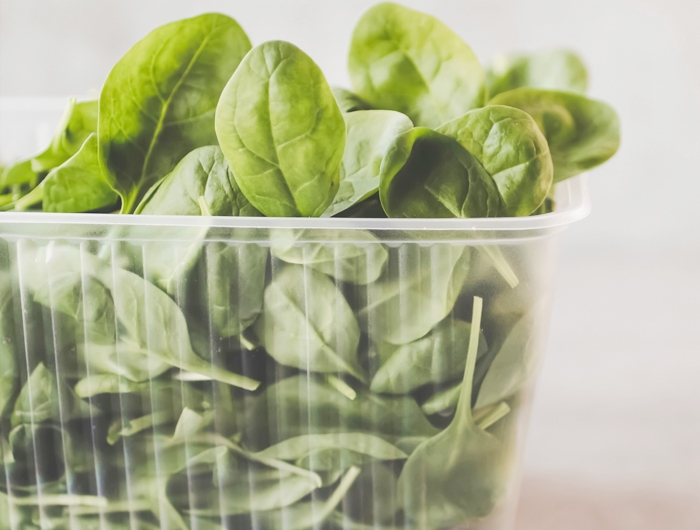
zhannaz - stock.adobe.com.
Ever stood in the supermarket wondering if you—or the planet—would be better off if you bought milk in a glass bottle rather than a carton or plastic jug? Or whether it should be a plastic, Styrofoam, or cardboard carton for eggs? Or a can or carton for soup? All packaging decisions involve a tradeoff. Here’s what to consider.
Hormone disruptors in food packages
“The sad truth is that food packaging today—whether it’s a soda bottle, pizza box, or takeout container—is made with toxic chemicals that are putting the planet and our health at risk,” says Cassie Huang, a consumer health project manager at the Environmental Defense Fund.
“There are over 12,000 food-contact chemicals,” notes Huang. “They might be added to packaging for functionality, like to make a material water- or oil-resistant. Toxic chemicals could also be used earlier in the supply chain, like in cleaning solutions used on manufacturing equipment.”
So even if you could buy a container that’s free of concerning chemicals—which is next to impossible—your food may have already picked up those chemicals from food processing equipment or storage containers or some other source.
The problem: Some of those 12,000 food-contact chemicals are hormone disruptors—that is, they can turn on, turn off, or alter the signals sent by your body’s hormones.
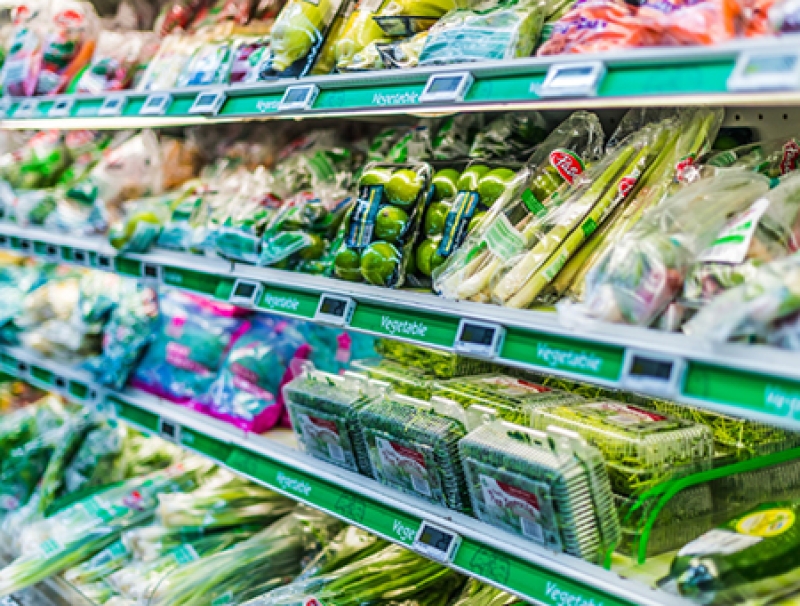
A few key examples of hormone disruptors, all of which can leach into food from packaging:
Bisphenols like BPA
Bisphenol A (BPA) is used to make polycarbonate, a ubiquitous hard plastic, and is added to some epoxy resins that line metal cans, jar lids, and bottle caps. Bisphenols are also used to coat thermal receipt paper, where it isn’t bound to the paper and can easily migrate to anything—your hand, for instance—that touches it.
BPA has been linked to health issues like behavioral problems and impaired learning in children, early puberty, infertility in women, and lower sperm count in men.
PFAS
Per- and polyfluoroalkyl substances are a class of more than 4,000 chemicals that are used in cosmetics, nonstick cookware, waterproof clothing, and more. In food packaging, PFAS are often used to make paperboard oil- and water-resistant. They’re also used in some plastic containers and plastic linings along the food supply chain.
“PFAS are forever chemicals, because they persist in the environment,” says Huang.
“When you toss that brown paperboard takeout container, those chemicals have a second life and leach into the environment, contaminating our water and soil.”
PFAS have been linked to some cancers, immune suppression, high cholesterol, thyroid hormone disruption, and high blood pressure during pregnancy.
Phthalates (THAL-ates)
They make plastics flexible and are widely used in shower curtains, cosmetics, IV tubes, food processing equipment, and food packaging.
Phthalates have been linked to problems like lower IQ in children, lower sperm count in men, and lower success rates in women undergoing in vitro fertilization.
The pros and cons of food packages for the planet
A perfect planet-friendly food package wouldn’t generate greenhouse gases or cause air pollution. It would be made with a minimal amount of water and no hazardous chemicals. To minimize food waste, it would protect its contents from light, air, and pathogens. You could use it over and over, and it could be recycled when you’re done with it.
That package doesn’t exist. Here are the ones that do.
Plastic
Pros:
- Comes in many varieties
- Doesn’t break easily
- Lightweight (cheap and requires less fuel to transport)
Cons:
- Made from ethane (a byproduct of fracking)
- Over 90 percent of plastic isn’t recycled, so it ends up in landfills, incinerated, or as litter on land or water
- Breaks down into microplastics, which contaminate our oceans, water, soil, and food
Cartons
Pros:
- Lightweight and packable (cheap and requires less fuel to transport)
- Often resealable, which helps cut down on food waste
Cons:
- Not recycled in many areas
- Paperboard in cartons is made by cutting down trees (which absorb greenhouse gases), not from recycled paper or cardboard
Tin or aluminum cans
Pros:
- Keeps food safe and maintains quality over the long haul, which helps reduce food waste
- Endlessly recyclable
- Typically made using recycled metal
Cons:
- To manufacture new cans, metals must be extracted from the earth, smelted, rolled into sheets, and formed into the right shape, which requires a lot of (typically fossil fuel) energy
Glass
Pros:
- Usually reusable
- Endlessly recyclable
- Companies can curb energy demands and greenhouse gas emissions by mixing recycled glass with new glass made from sand and other raw materials
Cons:
- The furnaces that melt sand and other raw materials to make molten glass run at very high temperatures, which requires a lot of (typically fossil fuel) energy
- Thicker and heavier than other packaging, requiring more fuel to transport
How to choose a better food package
Confused? These tips may help:
1. Avoid polystyrene (also known as Styrofoam).
“It’s incredibly toxic to make and recycle,” says Lynn Hoffman, co-president of Eureka Recycling in Minneapolis. Buy eggs in cardboard instead. Get your meat and seafood at the counter, not in the prepackaged Styrofoam trays from the refrigerator case. And when you eat out, bring your own container for leftovers.
2. Minimize plastic.
”My goal is to avoid plastic whenever I can,” says Judith Enck, president of Beyond Plastics, a project at Vermont’s Bennington College that aims to end plastic pollution. That may mean fewer choices or more prep work.
“I just buy a head of lettuce instead of the fancy greens that come in plastic,” says Enck. “And I don’t buy pre-cut fruit in plastic containers.”
3. Reuse glass.
Glass requires more energy than other materials to make and transport, but it likely contains the fewest chemicals of concern and is recyclable forever. Reuse those empty jars as many times as you can. When you’re done, recycle them.
4. Avoid the can con.
“‘Free from X’ claims don’t necessarily mean you’re in the clear,” says Huang. For example, “there are BPA-free cans, but they may contain a replacement chemical that could be just as harmful. That’s why companies need to make sure they’re replacing with safer chemicals.”
Use glass or ceramic in the microwave.
“Don’t heat food in plastic containers, even so-called microwave safe ones,” says Huang. “Chemicals like BPA are more likely to migrate out of the container when heated.”
5. Go package-free.
“It’s nearly impossible to avoid hormone disruptors in food packaging, so choose the package-free option as often as you can,” says Huang.
“For example, drink your coffee at the coffee shop instead of getting a disposable cup.” (Many places will serve you in a mug.) At a restaurant, bring your own reusable containers to take home leftovers. And at the supermarket, buy dry beans (to skip the can) and pick unpackaged produce.
How we can make packaging safe
“It shouldn’t be up to consumers to figure out whether or not their food packaging is safe,” says Huang.
“Companies need to clean up their acts, work with their supply chains, and ensure that their customers can trust them to provide safer and more sustainable packaging options.”
And the government should step up and ban harmful chemicals from coming in contact with our food.
To see which chemicals might contaminate which packages, check out the Environmental Defense Fund’s database.
More on sustainability
Earth on the edge: What to know about diet and climate
Sustainability

Peter's Memo: Protecting our planet
Sustainability
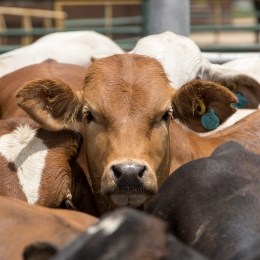
Take our climate quiz!
Sustainability
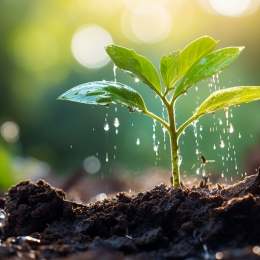
Reduce plastic use at home—for the planet’s health and ours
Sustainability
By Ari Navetta
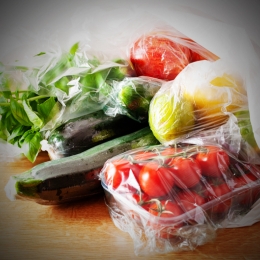
How the Biden administration can transform food in federal facilities for millions of people
Government Accountability

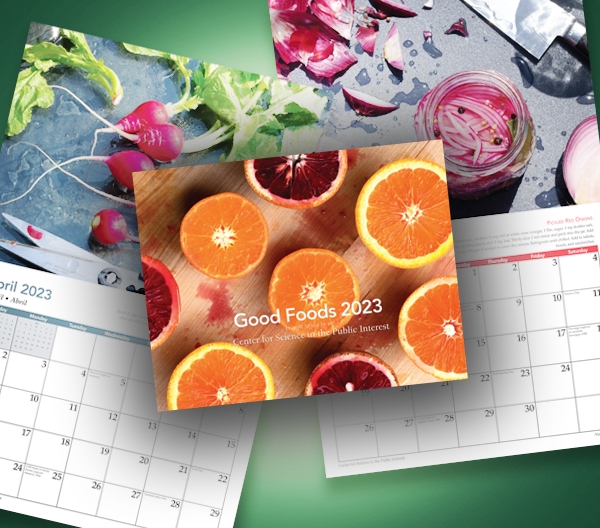
Calendar
Good Foods 2023
Every gorgeous photo in the Good Foods 2023 calendar will whet your appetite for delicious, healthy food. And the simple recipe below each photo, from Healthy Cook Kate Sherwood, will help you turn that month’s star into the star of your dinner table.

